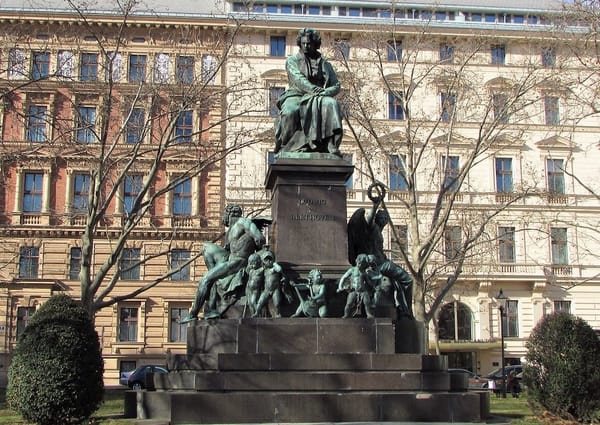FAREWELLS AND ALPINE TREKS: THE STAATSKAPELLE DRESDEN WITH RENÉE FLEMING AND CHRISTIAN THIELEMANN

The highlight of the 19 May concert performed by the Staatskapelle Dresden under the direction of Christian Thielemann at the Theatre de Champs Elysées, Paris, was undoubtedly Renée Fleming’s rendition of Strauss’s Four Last Songs. It took on a special poignancy because Ms Fleming is in the process of saying her farewells to the opera, and had just, presumably for the last time, starred as the Marschallin in Strauss’s Der Rosenkavalier at the New York Metropolitan Opera. The Theatre de Champs Elysées concert was among the first to represent her new focus on orchestral and chamber music concerts.
It would thus be somewhat unfair to judge a concert so replete with endings and beginnings, by the usual milestones; and churlish to criticise the at times wavering, at other times thin, tones that emerged from a voice that was once (and still continues overall to be) so magnificent. I have to say I have heard her perform these very songs so richly and effortlessly in the past that I found myself filling in her gaps with the enhanced expression of remembered emotions: also, as often happens with a well-loved performer, I shared in her sometimes evident anxiety – would she get to this or that note? Would she be able to swim harmoniously in its vicinity as before? For a listener who is also an admirer, the concert indeed had a few tense moments.
But overall, the spirit was willing even if the voice was sometimes weak – and from the opening Frühling, through September and Beim Schlafengehen, to Im Abendrot, one heard a continuous and emotional series of farewells. Each song, except for Frühling, deals implicitly or explicitly with death, and all of them were written shortly before Strauss’s own death in 1949. The soaring melody, first introduced by the violin and then followed by the soprano, of Beim Schlafengehen’s last lines ‘And unattendedly the soul/wants to take wings freely/to live on deep down and thousandfold/in the magic circle of the night’ was as, if not more, heartbreaking in the context of Fleming’s very human fragility, reflecting the onset of a twilight which will fall on the best of us. “How weary we are of wandering”, the penultimate line in Im Abendrot, seemed more like a cri de coeur in Fleming’s rendition.
The next and last work in this concert, Strauss’s Alpine Symphony suffered somewhat from its positioning, after so much emotion had already been expended; and also because the Symphony itself is a much less mature work, both in terms of Strauss’s own musical evolution and in terms of compositional perfection, than the Four Last Songs, which are the acme of both. True, the Symphony uses one of the largest orchestras ever, especially in the brass department; there are many innovations such as a wind machine and a thunder machine; and Strauss had undeniably reached his peak in orchestration. But a musical whole is also so much more than the sum of its parts; for instance, this work lacks the spiritual underpinnings of Strauss’s much earlier tone poem Also Sprach Zarathustra, whose many Straussian meanderings were so resplendently resolved in its transcendental climax.
The Alpine Symphony purports to tell the story of a group of climbers who lose their way up a mountain and are then drenched by a storm on their way down – Strauss had apparently had such an experience during his youth. The Symphony certainly has its moments, especially in the Sunrise section, and the penultimate section, Quiet Settles. But it is hard to be riveted to what is often a laborious musical reworking of a (presumably) even more laborious trek, despite the more existential interpretation that is often given to this work (which is in fact much more appropriate for Also Sprach Zarathustra). Perhaps the intermittent writing of the Alpine Symphony – started in 1899, returned to in 1911 after the death of Strauss’s good friend Gustav Mahler, and finished in 1915 – as well as its many twists and turns through intervening drafts, cause it to lack the je ne sais quoi of a full artistic quotient. One is tempted to quote Strauss himself, during its writing process where he said he was “torturing [himself] with a symphony – a job that, when all’s said and done, amuse[d] [him] even less than chasing cockroaches”.
The Staatskapelle Dresden performed this demanding, if unrewarding, Symphony, to the best of their considerable abilities, and Thielemann’s direction was irreproachable. But memory is ruthless in its discernment: long after the crashing chords of the Alpine Symphony have been obliterated, the melancholy farewells of the Four Last Songs will continue to resonate, and move, their audience.





